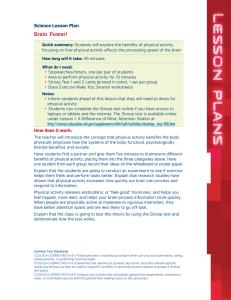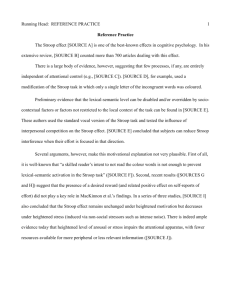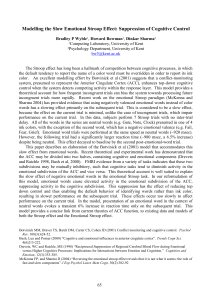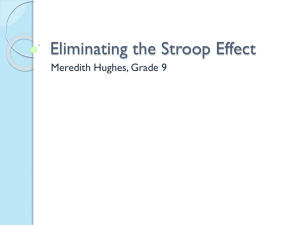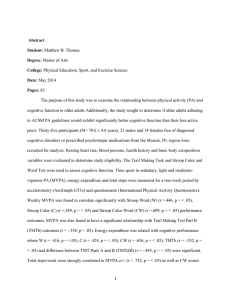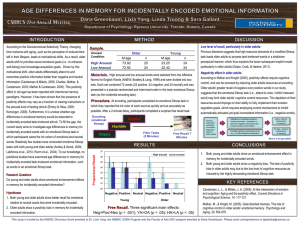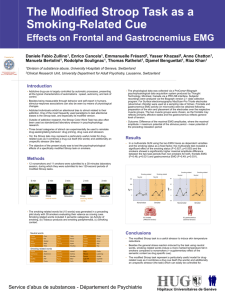Operationally define these conceptual variables
advertisement
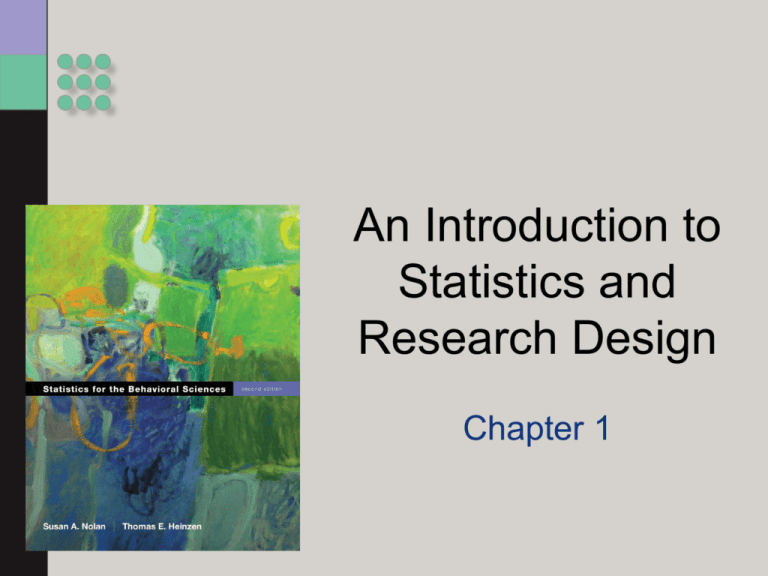
An Introduction to Statistics and Research Design Chapter 1 Two Branches of Statistics • Descriptive statistics – Organize, summarize, and communicate numerical information • Inferential statistics – Use samples to draw conclusions about a population Samples and Populations • A population is a collection of all possible members of a defined group. – Could be any size • A sample is a set of observations drawn from a subset of the population of interest. – A portion of the population • Sample results are used to estimate the population. Distinguishing Between a Sample and a Population >Population of the world • Population of United States or sample from the world • Population of our school or sample from our country – Population of our class or sample from our school Variables • Observations that can take on a range of values. – An example: Reaction time in the Stroop Task • The time to say the colors compared to the time to say the word Stroop Demonstration • Look at the following words and say each word as quickly as you can: WHITE RED GREEN BROWN Stroop Demonstration, cont. • Now look at the following words and say the color of the font, not what the word says, as quickly as you can. WHITE RED GREEN BROWN Stroop Test • Why is the Stroop test hard? – It seems we have a hard time inhibiting our reading of the word! Types of Variables • Discrete – Variables that can only take on specific values (e.g., whole numbers) • How many letters are in your name? • Continuous – Can take on a full range of values • How tall are you? More Classification of Variables • Nominal: category or name • Ordinal: ranking of data • Interval: used with numbers that are equally spaced • Ratio: like interval, but has a meaningful 0 point Examples of Variables • • • • Nominal: name of cookies Ordinal: ranking of favorite cookies Interval: temperature of cookies Ratio: How many cookies are left? • What kind of data does our Stroop test give us? Interval or ratio? Variables • Independent – That you manipulate or categorize • Dependent – That you measure; it depends on the independent variable • Confounding – That you try to control or randomize away – Confounds your other measures! Reliability and Validity • A reliable measure is consistent. – Measure your height today and then again tomorrow. • A valid measure is one that measures what it was intended to measure. – A measuring tape should accurately measure height. > A good variable is both reliable and valid. Rorschach Personality Test > The reliability of the Rorschach inkblot test is questionable. > The validity of the information it produces is difficult to interpret. Developing Research Hypotheses Hypothesis Testing • The process of drawing conclusions about whether a relation between variables is supported or not supported by the evidence. Assessing Variables > Operational definition • How to measure or detect variable of interest • Depression: – – – – – Diminished interest in activities Significant weight loss/gain Fatigue (loss of energy) Feelings of worthlessness Recurrent thoughts of death or suicide Operationally define these conceptual variables: Types of Research Designs • Experiments: studies in which participants are randomly assigned to a condition or level of one or more independent variables Experiments and Causality • Experiments: able to make causal statements – Control the confounding variables • Importance of randomization Figure 1-3: Self-Selected into or Randomly Assigned to One of Two Groups: Guitar Hero Players vs. Non-Guitar Hero Players One Goal, Two Strategies • Between-groups designs – Different people complete the tasks, and comparisons are made between groups. • Within-groups designs – The same participants do things more than once, and comparisons are made over time. Other Research Designs • Not all research can be done through experimentation. – Unethical or impractical to randomly assign participants to conditions. • Correlational studies do not manipulate either variable. – Variables are assessed as they exist. Correlational Analysis • Video game playing and aggression are related. • No evidence that playing video games causes aggression. Outlier Analysis • An outlier is an extreme score - very high or very low compared to the rest of the scores. • Outlier analysis – study of the factors that influence the dependent variable.

